A Re-Think on the Origins of Wedge Car Design
by Guy Dirkin and Geoffrey Hacker
UndiscoveredClassics.com
In the late 1960s and 1970s a design movement took place, with car styling emphasizing predominant angular silhouettes, with whole body triangulation front to rear. These cars have been collectively referred to as “wedge cars”. Concept cars from the Italian design houses of Bertone, Pininfarina and Ital framed wedge-shaped exotics in the mind’s eye of the public at large. Interest in wedge car design resurfaced in 2019 with the unveiling of the Tesla Cybertruck.
Strother MacMinn predicted the rise of wedge car design in the February 1957 edition of Road & Track entitled “Driving the Wedge or, after 1960, What?” MacMinn was the head of Art Center College of Design’s transportation department for many years. Chuck Jordan, VP of Design for GM from 1986-1982, said, “… no one influenced car design more than he did.”
MacMinn (simply Mac, to his students, friends and colleagues) noted that an assumed value has been placed on wedge shapes and wedge themes since the origin of the motor car. He used the 1899 Vallee Racing Slipper as an early example of a wedge-shaped nose assisting the car to cut through the air more efficiently. MacMinn explains that wedge elements may be horizontal and vertical; in part, or approaching the whole cars overall shape. Seagraves’s Sunbeam, first to reach 200 mph on land, was a “blunt-nose horizontal wedge envelope body.”
In covering the history of wedge car design, automotive journalists and historians tend to focus on the concept cars of the Italian design houses. Frequently, the 1967 Lamborghini Marzal is often cited as the first wedge car. Certainly, Marcelo Gandini’s 1968 Alpha Romeo Carabo emphasized full wedge car treatment. MacMinn’s 1957 prediction of the uptake of wedge design was only partially true. Exotics and concept cars of the late 1960’s did embrace the wedge, thanks in part to mid-engine placement behind the driver. However, the larger manufacturers did not embrace wedge design in many production cars. The Fiat X1/9, Triumph TR7 and the Fiero being notable exceptions, for a niche buyer.
In March 2022, the 1966 Cannara was displayed at The Amelia, Concours d’Elegance in Florida. Art Center student, Ray Cannara designed and built a front mid-engined car with pure wedge elements. Ray Cannara was mentored by Strother MacMinn, and went on to a design career with Chrysler. Guy Dirkin and Geoff Hacker, following an extensive review of wedge car design history propose that the 1966 Cannara is the first car with requisite pure wedge car design elements. At the very least, the Cannara is a legitimate historical design anchor for wedge cars. Details of their review and proposed perspective can be found in their e-book The Origins of Wedge Car Design.
In reviewing Dirkin and Hackers work, designer and Pebble Beach judge, Raffi Minasian commented: “What is more and more apparent is that this design is clearly one of the earliest of its type, but more specifically it is the first car to completely embrace all aspects of wedge design, rather than simply using vector-based or linear design elements. This design is the full, and complete embracement of the wedge theme, both as a concept direction and as a complete car.”
At first glance, the 1966 Cannara displays the requisite wedge silhouette from most viewing angles. Ray Cannara, in his late teens, added complexity to the design which enhances the over look of his car. Raffi Minasian eloquently stated: “Although the overall effect of the Cannara is driven by linear themes, the details are very thoughtfully managed to pull the eye into subtle curved elements. The gentle undulations of the belt line as it arches over the wheel openings soften the wheels and help manage the bobbed tail. The rear corners of the car are not cut short or visually abrupt—they terminate in harmony with the wheels and curved undercut behind the rear tires. Linear wedge design can be a bit shocking because automotive architecture is generally fluid and curvaceous. We tend to see this more in fighter jet design—angular overall but with softened details. It takes a careful eye to work softness into an angular form so that the sharp theme is still dominant but does not agitate the eye.”
The 1966 Cannara is a fascinating addition to wedge car history and is a design that can be compared with the best from Italy.
Moore on the Cannara:
RM Sotheby’s Collector Car Podcast
Guy Dirkin, the owner of the Cannara and partner with many of the Undiscovered Classics projects that I do, created a story for Deans Garage with additional photos to help support the story. In addition, Guy and I collaborated on creating a book on the origins of wedge car design. The book is free to download.

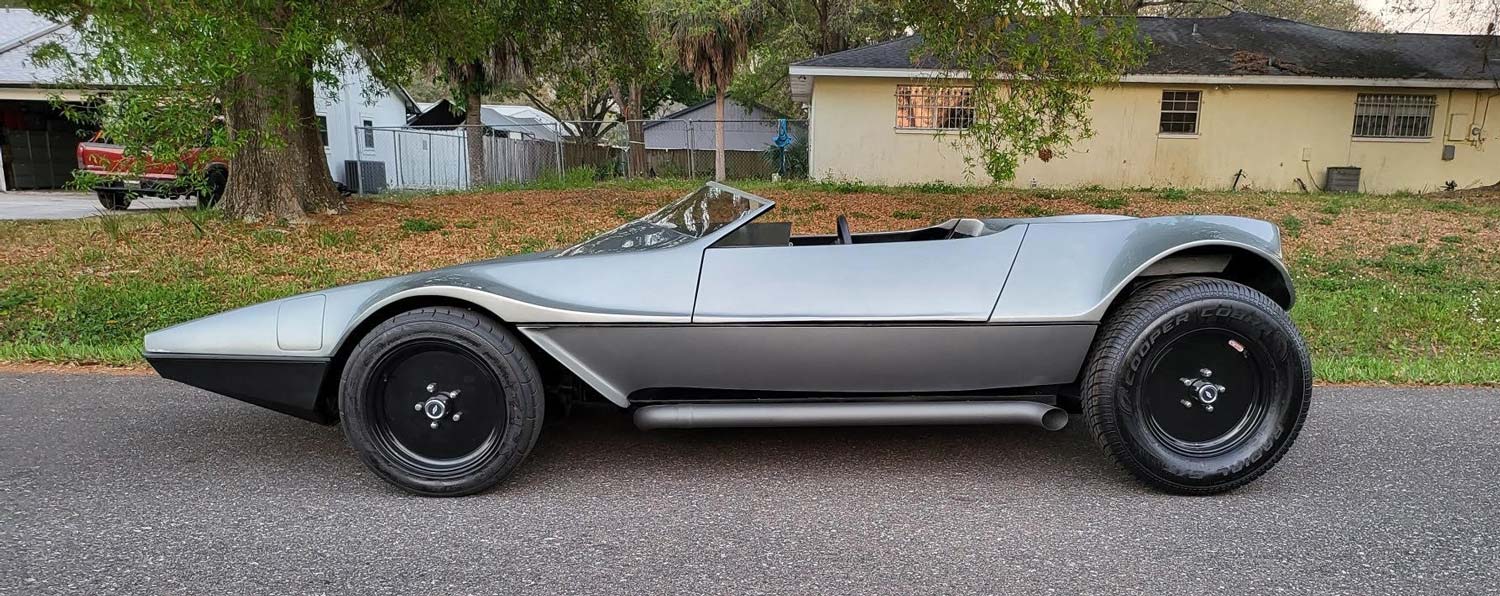
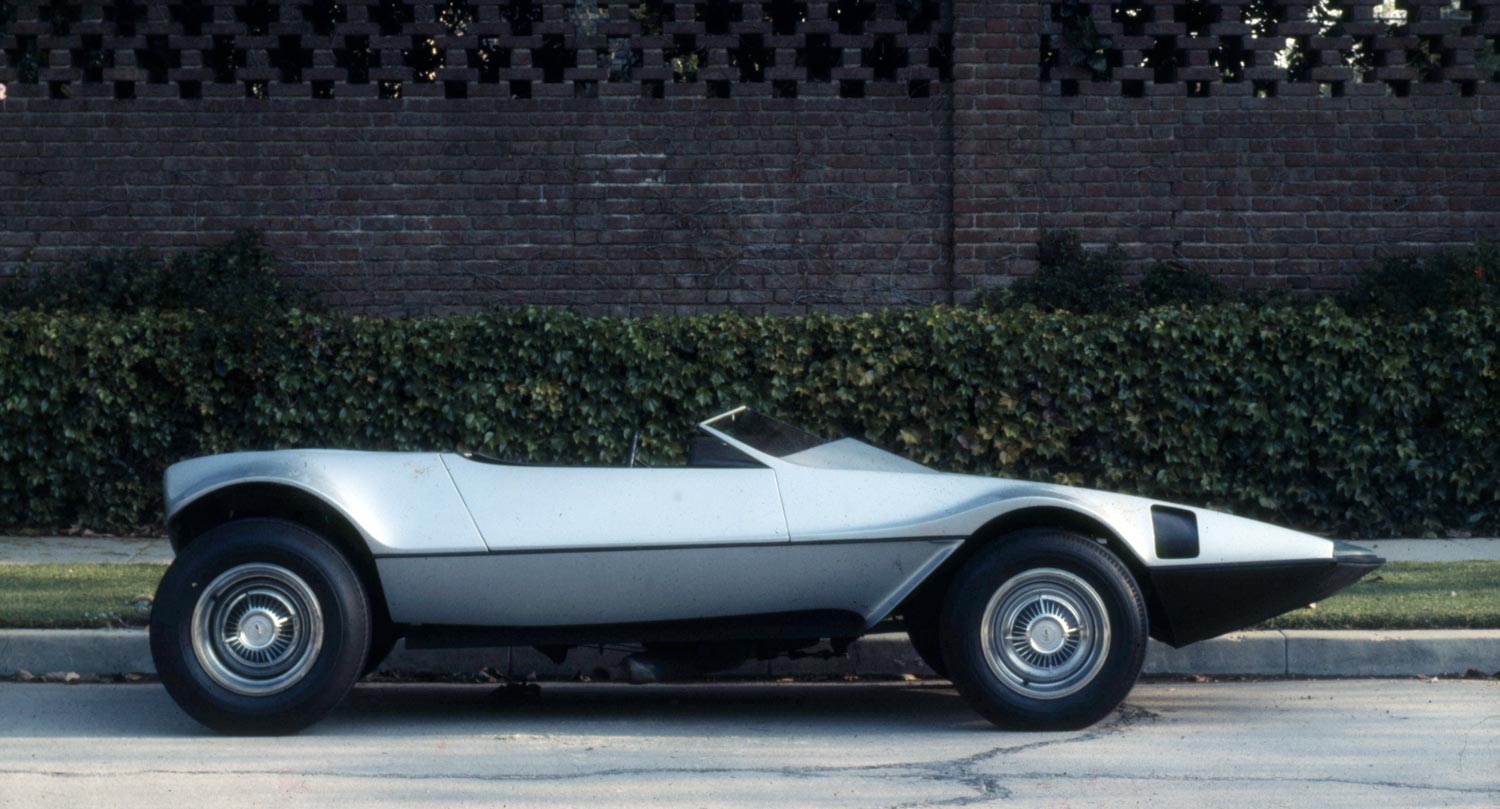
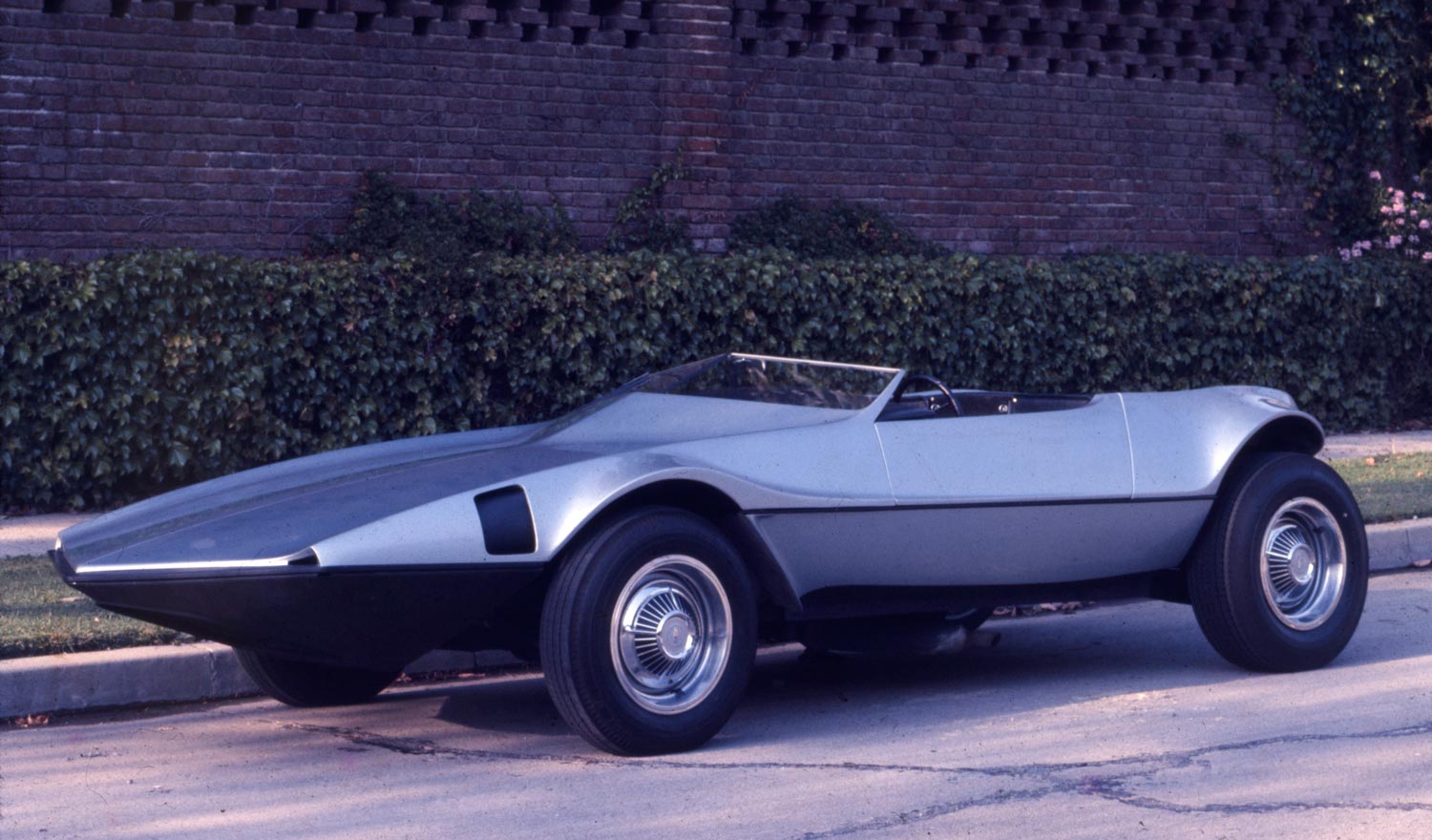
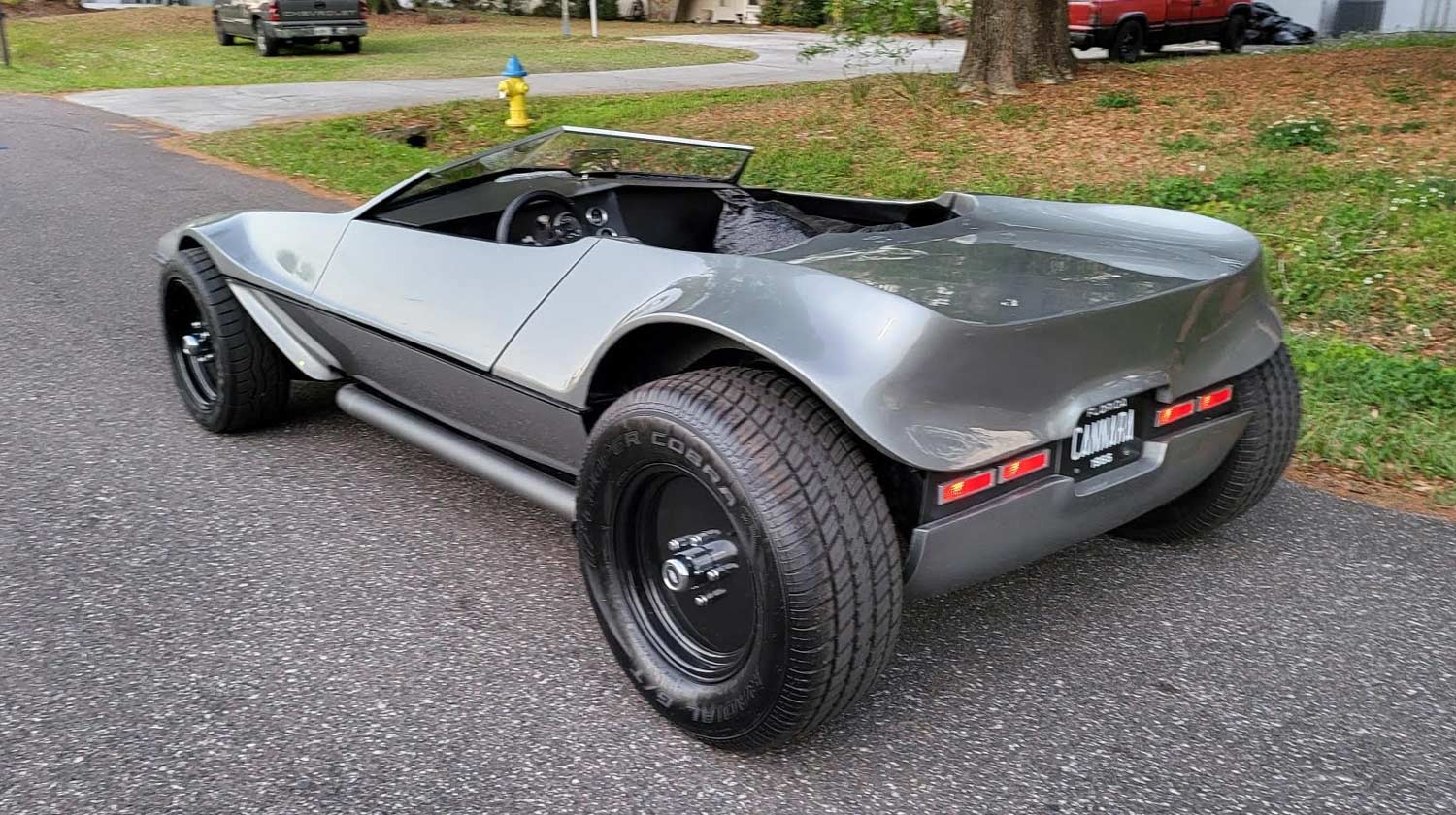
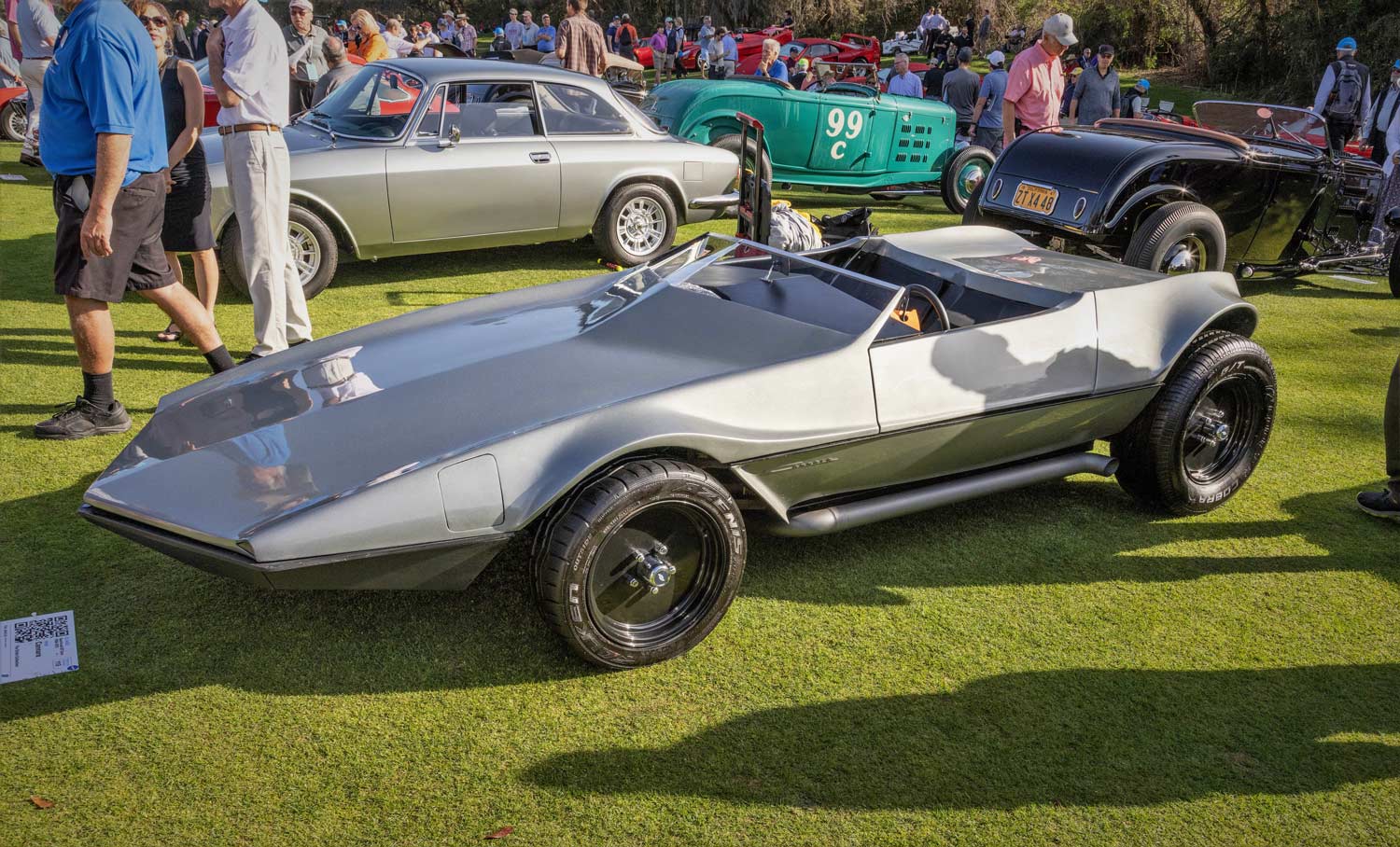
Mac was a excellent instructor at ACCD for many, many years. However, do to internal politics…..Mac was never head of the ID Dept.
Given his strong empathy to “his” students over the decades that may have been a good thing! I learned surface development from him, among many other things, and will always consider Mac as one of my finest instructors as well as a friend like he was to countless other ACCD students. Truly one of the BEST Art Center ever had on staff!
He was always keeping a practiced eye out for the next “thing” in design. His photos and articles in R&T were very clear and informative for designers and general public.
Mac’s knowledge of design history and how it could relate to tomorrow’s design work was very helpful to ACCD students trying to learn how to be creative professionals.
A true gentleman and scholar. DFO
DFO
Obviously, MacMinn was ahead of the curve (and his fellow designers). Although Jim Hall’s Chaparral 2A of 1963-1964 started with a conventional front-end design that caused lift (like the Corvette Grand Sports and the Cheetah), by late 1964 and into 1965, Hall fashioned the Chaparral with a wedge-like front-end, although the front wheels still protruded above the mid-point of the front-end. Of course, front-end lift was still a problem as the Chaparral 2s and 2C raced with additional spoilers on the fenders. Most other sports cars had blunt front-ends at that point in the 1960s. I wonder if MacMinn ever spoke at length with Jim Hall (maybe through G.M.’s Frank Winchell) or even Colin Chapman (Lotus 56). Has the Cannara ever been tested in a wind tunnel ? It is regardless a milestone car. Thank you for the discussion.
Perhaps the wedgiest of wedge car design would be the 1968 Autolite Lead Wedge Land Speed car.
Mac also was one of my instructors at ACCD; always showed up to class with a smile and a stack of car magazines from around the world.
Mac may have been ahead of the curve but unfortunately he did not tell anybody how he got there. He did see it coming in many small ways. An interesting article that focuses on the wedge as a purely stylistic expression. I do not agree with that proposition. I see the wedge shape as expressed in many automobile designs as the result of aerodynamic forces and basic vehicle architecture and interior packaging. Most of them fought it all the way. It is interesting that often the three work hand in hand.
The “WEDGE” first started to appear in the 1930s, the Bugatti Type 34 is a good example, however it was not recognized as a wedge car, the profile was ignored, but it was. I think that on that car the visual wedge aesthetic was clearly related to functional characeristics, the driver location, the frontal area and how aerodynamics were understood at that time, boatail and all.
Then in the late forties it continued but known on Ferarris as the “Dago Rake”, Italian obviously. This Rake I am sure was for aerodynamic reasons as it raised the tail and interior packaging on those cars without a full back seat was not a problem. A very proper aero roof profile could be developed. The “Visual Wedge” was clearly expressed in the late fifties by Chrysler, followed by Ford and GM. It looked right, they were visual wedges but more by the organization of the volumes responded to by the aesthetics. People did not think of them in that way. Then came the Kamm Ferrari racer. The aerodynamicists noticed but nobody else did.
Once Front Wheel Drive came along on small cars in the seventies packaging of the rear compartment dictated height in the rear of the interior package which also resulted in added luggage capacity. The height of the rear deck was then able to re-attach flow off of the roof, lowering the drag for increased fuel economy and minimizing the wake. Those cars were clear examples of modern aero wedges, visually and aerodynamically as well as having good interior space. They were short so it was difficult to get a low drag number although a small frontal area resulted in a reasonably low CDA. At that time aerodynamics was starting to be understood by some in the industry although much of it was still ‘Black Art”.
The WEDGE was not a styling trend, in my opinion it was not the result of arbitrary visual aesthetic organization but of functional characteristics that started to be faced by designers as the automobile continued to evolve as a product on the global stage. Fuel efficiency became a global priority as a result of the oil crisis in 1980.
Vehicle architecture may even be on some of the examples shown in this article but not credited.
Gary,
As usual you have left out my father’s contribution and my own, for that matter, to
your wedge design article. It was certainly part of “Fins” development and Chrysler’s “Forward Look. My father preached getting rid of a “Drag Ass” look that prevailed in the 40s. and showed a “finned wedge like design” illustration at a Detroit Auto Show in 1948 when he was the Chief of Design at Studebaker.
I am attaching just a fraction of the works by father and myself that precluded the
’60s in a separate e-mail to you. Please use.
Virgil Exner, Jr.
I would have to agree to a large extent with Mr Exner Jr. who is a remarkable man in his own rights… The Cannara is not to be swept aside as it is a a fascinating design and preceded the Bertone Studio Autobianchi Runabout by a number of years… people were starting to flirt with these what I lovingly call door stop design cars, some of which were magical others trite but that is another discussion entirely… European and American designers became intrigued with these wedge shapes and it started creative juices flowing in a lot of folks and a raft of angular wedge designs were started and many interesting cars created… Thanks for showcasing this wonderful little car.
BTW the free downloadable book by Geoff Hacker and Guy Dirkin, is so worth the time to check out and just incase you missed the link it is at the end of the article…
Happy Reading
In 1971 I designed and produced my first wedge car body for a shortened VW chassis (80″ wb). The TALON GT. In 1976 a standard (94.5″) VW chassis was used and the TALON GT 2+2 was created. Only 6 bodies were built and only 2 complete cars still exist. One of the two existing bodies is currently being restored and upgraded by myself.
0
As the author of a book about Colin Chapman I have to mention his dramatic adoption of the full-wedge concept for his Lotus racing cars starting in 1968 with the introduction of the turbine-powered Type 56 for Indy — the most pure wedge there ever was. This had a tremendous influence on both racing cars and road cars including Chapman’s own Type 72 GP car of 1970. It was Chapman’s reaction to his discovery that his cars were lifting, not sinking, on the Indianapolis corners!
I remember riding in Ray Cannara’s roadster while it was under construction. It was very exciting because the engine was in the passenger compartment between his legs and mine. There was no firewall, instrument panel or inner fender liners. Of course, the seats were very minimal too, yet to be designed. It’s amazing that he could drive it across country when finished.
Ray worked at Chrysler for many years and was a very creative and unique character.